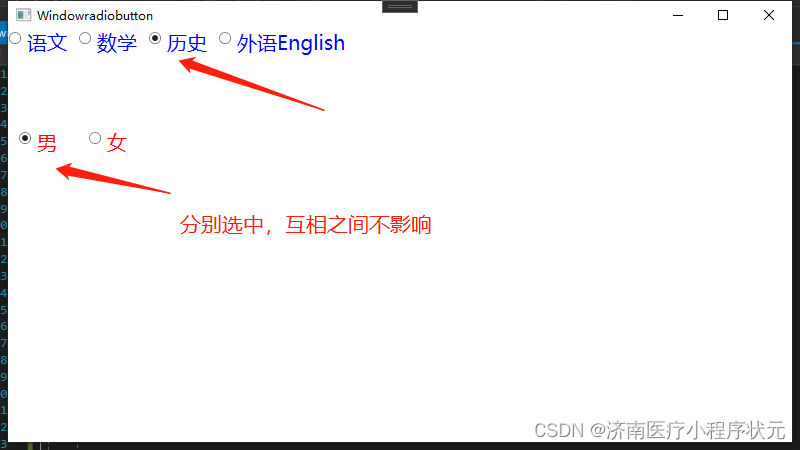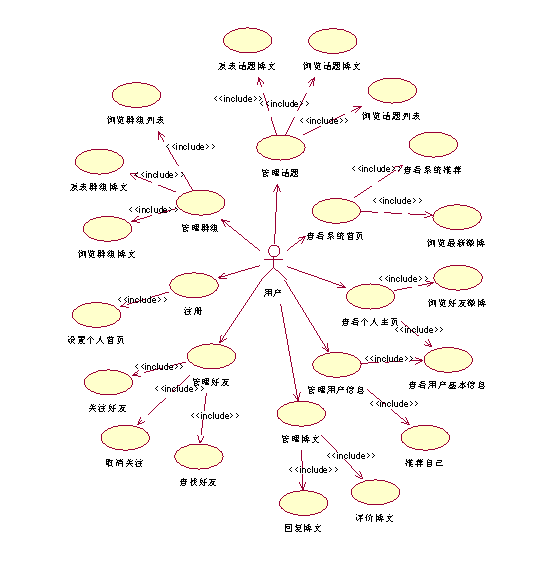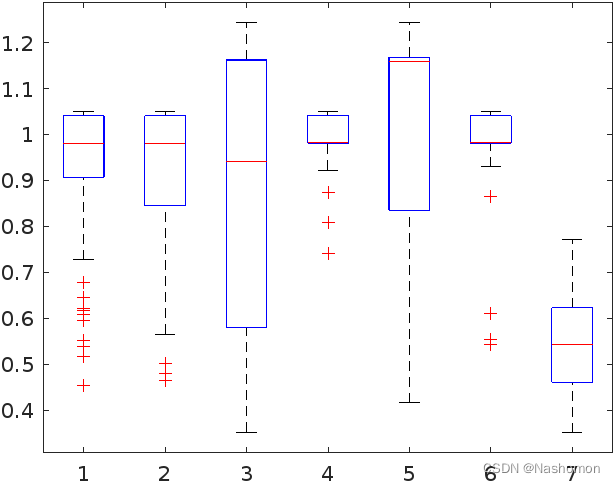当前位置:网站首页>T - sne + data visualization parts of the network parameters
T - sne + data visualization parts of the network parameters
2022-07-31 15:38:00 【FakeOccupational】
注:This code mainly realizes the visualization of an intermediate feature or calculated network parameters in the network.If only a simple parameter in the network is visualized,可以考虑使用 model.weight得到矩阵,Then put it in the dimensionality reduction visualization part of the partial code.TSNE参数说明
总体代码
import torch
import torch.nn as nn
import torch.nn.functional as F
from sklearn.manifold import TSNE
import matplotlib.pyplot as plt
class Network(nn.Module): # extend nn.Module class of nn
def __init__(self):
super().__init__() # super class constructor
self.conv1 = nn.Conv2d(in_channels=1, out_channels=6, kernel_size=(5, 5))
self.batchN1 = nn.BatchNorm2d(num_features=6)
self.conv2 = nn.Conv2d(in_channels=6, out_channels=12, kernel_size=(5, 5))
self.fc1 = nn.Linear(in_features=12 * 4 * 4, out_features=120)
self.batchN2 = nn.BatchNorm1d(num_features=120)
self.fc2 = nn.Linear(in_features=120, out_features=60)
self.out = nn.Linear(in_features=60, out_features=10)
def forward(self, t): # implements the forward method (flow of tensors)
# hidden conv layer
t = self.conv1(t)
t = F.max_pool2d(input=t, kernel_size=2, stride=2)
t = F.relu(t)
t = self.batchN1(t)
# hidden conv layer
t = self.conv2(t)
t = F.max_pool2d(input=t, kernel_size=2, stride=2)
t = F.relu(t)
# flatten
t = t.reshape(-1, 12 * 4 * 4)
t = self.fc1(t)
t = F.relu(t)
t = self.batchN2(t)
t = self.fc2(t)
t = F.relu(t)
# output
t = self.out(t)
return t
cnn_model = Network() # init model
pretrained_dict = cnn_model.state_dict()
class Identity(nn.Module):
def __init__(self):
super(Identity, self).__init__()
self.conv1 = nn.Conv2d(in_channels=1, out_channels=6, kernel_size=(5, 5))
def forward(self, x):
return x
model = Identity()
model_dict = model.state_dict()
# model.load_state_dict(pretrained_dict) # RuntimeError: Error(s) in loading state_dict for Identity: Unexpected key(s) in state_dict: "batchN1.weight", "batchN1.bias", "batchN1.running_mean",
# 1. filter out unnecessary keys
pretrained_dict = {
k: v for k, v in pretrained_dict.items() if k in model_dict}
# 2. overwrite entries in the existing state dict
model_dict.update(pretrained_dict)
# 3. load the new state dict
model.load_state_dict(pretrained_dict)
vector = model.conv1.weight.detach().numpy()[0,0,:,:]
digits_final = TSNE(perplexity=30).fit_transform(vector) #
plt.scatter(digits_final[:,0], digits_final[:,1])
plt.show()
Functional division code
Model processing part
import torch
import torch.nn as nn
import torch.nn.functional as F
class Network(nn.Module): # extend nn.Module class of nn
def __init__(self):
super().__init__() # super class constructor
self.conv1 = nn.Conv2d(in_channels=1, out_channels=6, kernel_size=(5, 5))
self.batchN1 = nn.BatchNorm2d(num_features=6)
self.conv2 = nn.Conv2d(in_channels=6, out_channels=12, kernel_size=(5, 5))
self.fc1 = nn.Linear(in_features=12 * 4 * 4, out_features=120)
self.batchN2 = nn.BatchNorm1d(num_features=120)
self.fc2 = nn.Linear(in_features=120, out_features=60)
self.out = nn.Linear(in_features=60, out_features=10)
def forward(self, t): # implements the forward method (flow of tensors)
# hidden conv layer
t = self.conv1(t)
t = F.max_pool2d(input=t, kernel_size=2, stride=2)
t = F.relu(t)
t = self.batchN1(t)
# hidden conv layer
t = self.conv2(t)
t = F.max_pool2d(input=t, kernel_size=2, stride=2)
t = F.relu(t)
# flatten
t = t.reshape(-1, 12 * 4 * 4)
t = self.fc1(t)
t = F.relu(t)
t = self.batchN2(t)
t = self.fc2(t)
t = F.relu(t)
# output
t = self.out(t)
return t
cnn_model = Network() # init model
pretrained_dict = cnn_model.state_dict()
class Identity(nn.Module):
def __init__(self):
super(Identity, self).__init__()
self.conv1 = nn.Conv2d(in_channels=1, out_channels=6, kernel_size=(5, 5))
def forward(self, x):
return x
model = Identity()
model_dict = model.state_dict()
# model.load_state_dict(pretrained_dict) # RuntimeError: Error(s) in loading state_dict for Identity: Unexpected key(s) in state_dict: "batchN1.weight", "batchN1.bias", "batchN1.running_mean",
# 1. filter out unnecessary keys
pretrained_dict = {
k: v for k, v in pretrained_dict.items() if k in model_dict}
# 2. overwrite entries in the existing state dict
model_dict.update(pretrained_dict)
# 3. load the new state dict
model.load_state_dict(pretrained_dict)
Dimensionality reduction visualization part
import numpy as np
import sklearn #Import scikitlearn for machine learning functionalities
from sklearn.manifold import TSNE
from sklearn.datasets import load_digits # For the UCI ML handwritten digits dataset
import matplotlib # Matplotlib 是 Python 中的一个库,它是 NumPy Numerical math extensions to the library
import matplotlib.pyplot as plt
import matplotlib.patheffects as pe
import seaborn as sb
digits = load_digits()
print(digits.data.shape) # There are 10 classes (0 to 9) with alomst 180 images in each class
# The images are 8x8 and hence 64 pixels(dimensions)
plt.gray();
#Displaying what the standard images look like
for i in range(0,10):
plt.matshow(digits.images[i])
plt.show()
X = np.vstack([digits.data[digits.target==i] for i in range(10)]) # Place the arrays of data of each digit on top of each other and store in X
# X = np.random.random([1797, 64])
#Implementing the TSNE Function - ah Scikit learn makes it so easy!
digits_final = TSNE(perplexity=30).fit_transform(X) # plt.scatter(digits_final[0], digits_final[1])
#Play around with varying the parameters like perplexity, random_state to get different plots
# With the above line, our job is done. But why did we even reduce the dimensions in the first place?
# To visualise it on a graph.
# So, here is a utility function that helps to do a scatter plot of thee transformed data
def plot(x, colors):
palette = np.array(sb.color_palette("hls", 10)) # Choosing color palette
# Create a scatter plot.
f = plt.figure(figsize=(8, 8))
ax = plt.subplot(aspect='equal')
sc = ax.scatter(x[:, 0], x[:, 1], lw=0, s=40, c=palette[colors.astype(np.int)])
# 添加文本
txts = []
# for i in range(10):
# # Position of each label.
# xtext, ytext = np.median(x[colors == i, :], axis=0) # 返回数组元素的中位数.
# txt = ax.text(xtext, ytext, str(i), fontsize=24) # Text(6.610861, 37.19979, '9')
# txt.set_path_effects([pe.Stroke(linewidth=5, foreground="w"), pe.Normal()])# 文本效果
# txts.append(txt)
return f, ax, txts
Y = np.hstack([digits.target[digits.target==i] for i in range(10)]) # Place the arrays of data of each target digit by the side of each other continuosly and store in Y
plot(digits_final,Y)
plt.show()
t-sne Mathematical interpretation of data visualization
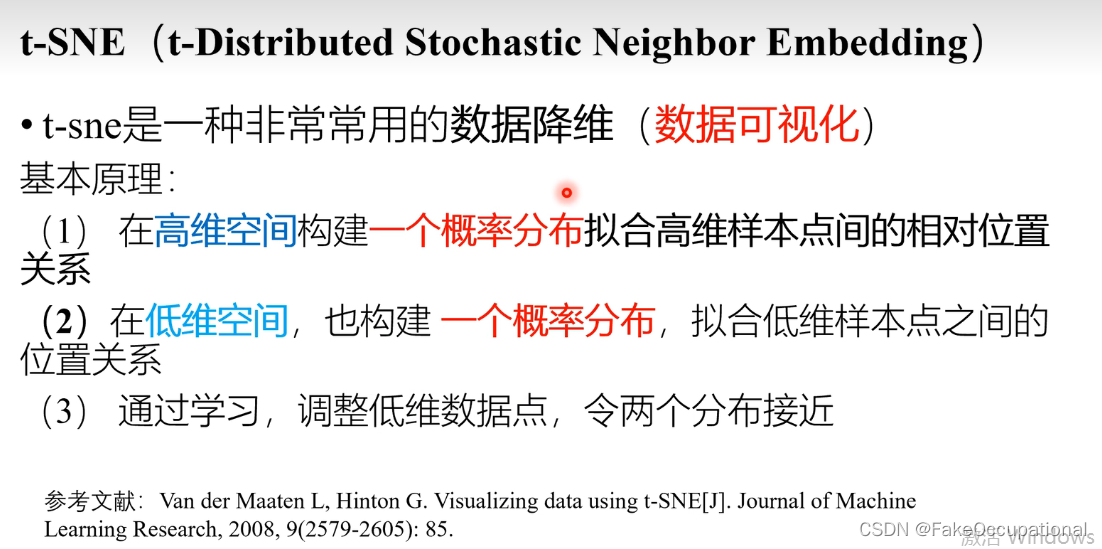
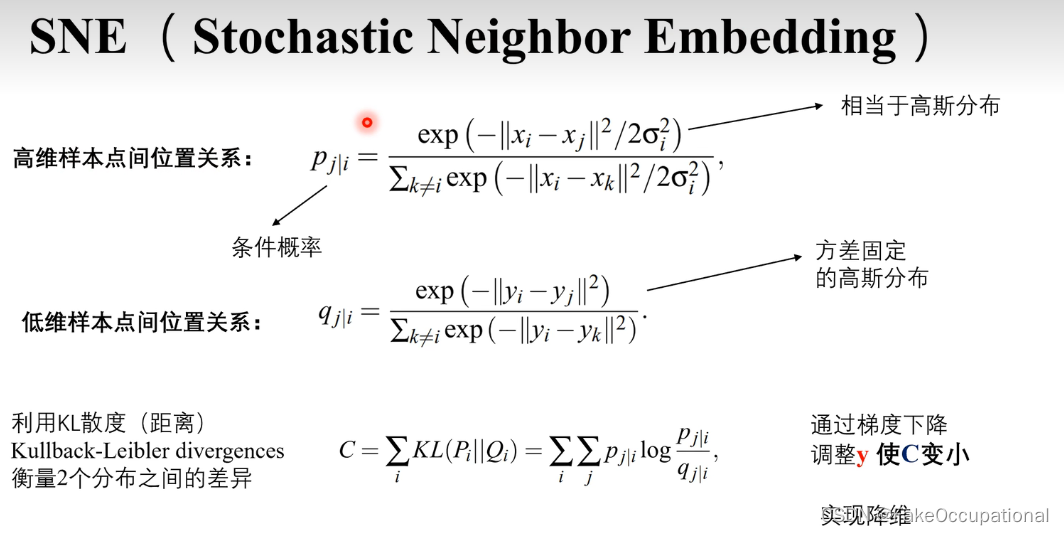
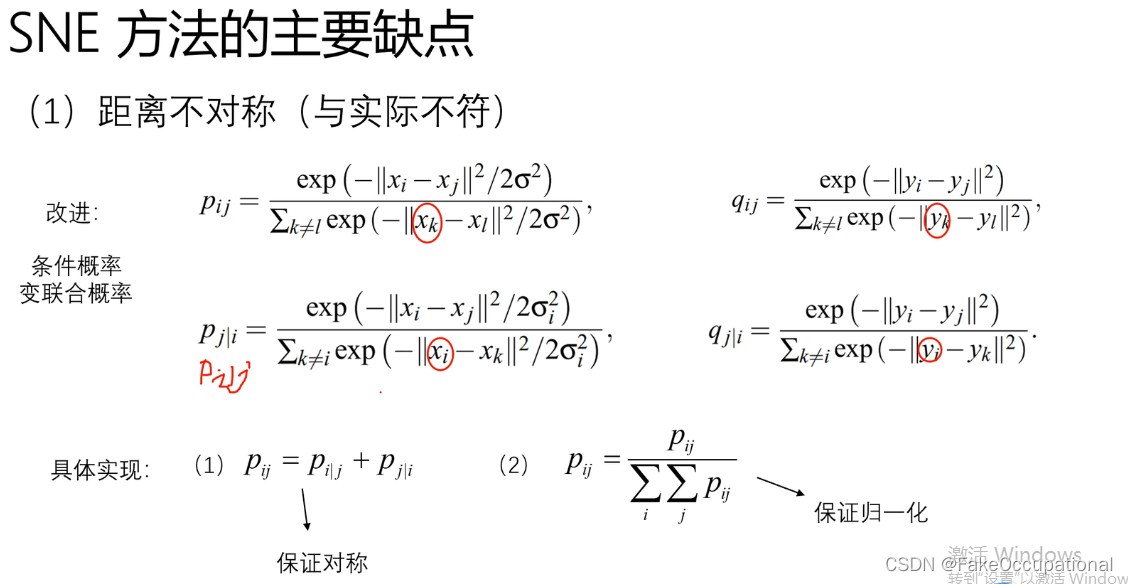

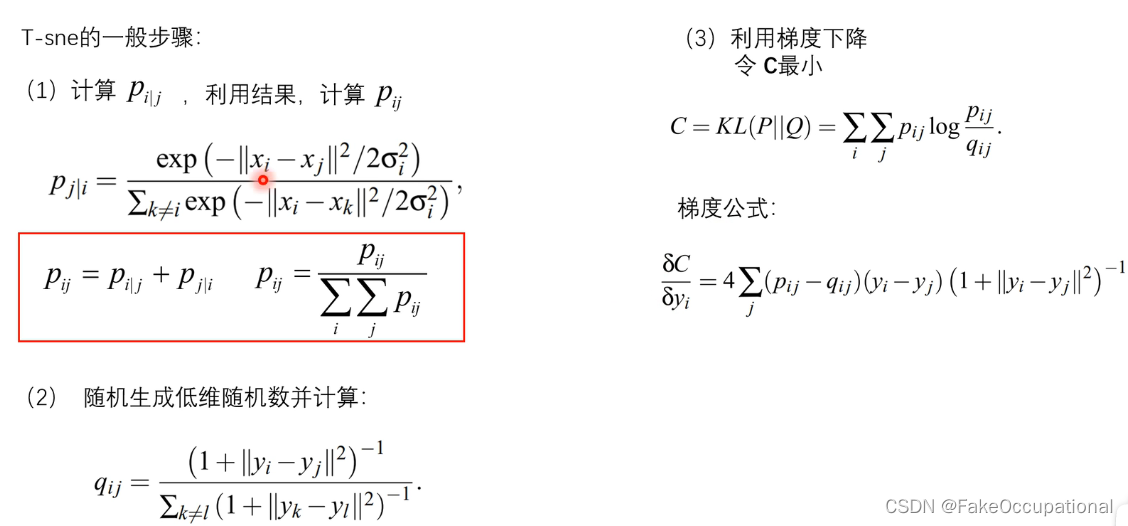
参考与更多
pytorchOfficial save and load model tutorial(contains the use of TorchScript 格式导出/加载模型)
Modification of the model dictionary: https://discuss.pytorch.org/t/how-to-load-part-of-pre-trained-model/1113/2
scikit-learn.org
https://github.com/shivanichander/tSNE/blob/master/Code/tSNE%20Code.ipynb
t-SNE:One of the best dimensionality reduction methods - 知乎 (zhihu.com)
https://discuss.pytorch.org/t/changing-state-dict-value-is-not-changing-model/88695/2
model = nn.Linear(1, 1)
print(model.weight)
# ISOMAP https://scikit-learn.org.cn/view/452.html
from sklearn.manifold import Isomap
digits_final = Isomap(n_components=2).fit_transform(res)
边栏推荐
猜你喜欢
随机推荐
button控件的使用
MySQL database operations
TRACE32 - Common Operations
leetcode303 Weekly Match Replay
The normal form of the database (first normal form, second normal form, third normal form, BCNF normal form) "recommended collection"
Snake Project (Simple)
11 pinia use
7. Summary of common interview questions
Applicable scenario of multi-master replication (2) - client and collaborative editing that require offline operation
基于ABP实现DDD
TextBlock控件入门基础工具使用用法,取上法入门
radiobutton的使用
多主复制下处理写冲突(4)-多主复制拓扑
JVM parameter analysis Xmx, Xms, Xmn, NewRatio, SurvivorRatio, PermSize, PrintGC "recommended collection"
Visualize GraphQL schemas with GraphiQL
R language ggplot2 visualization: use the ggboxplot function of the ggpubr package to visualize the box plot, use the font function to customize the font size, color, style (bold, italic) of the legen
type of timer
RecyclerView高效使用第二节
ansible study notes 02
what exactly is json (c# json)

